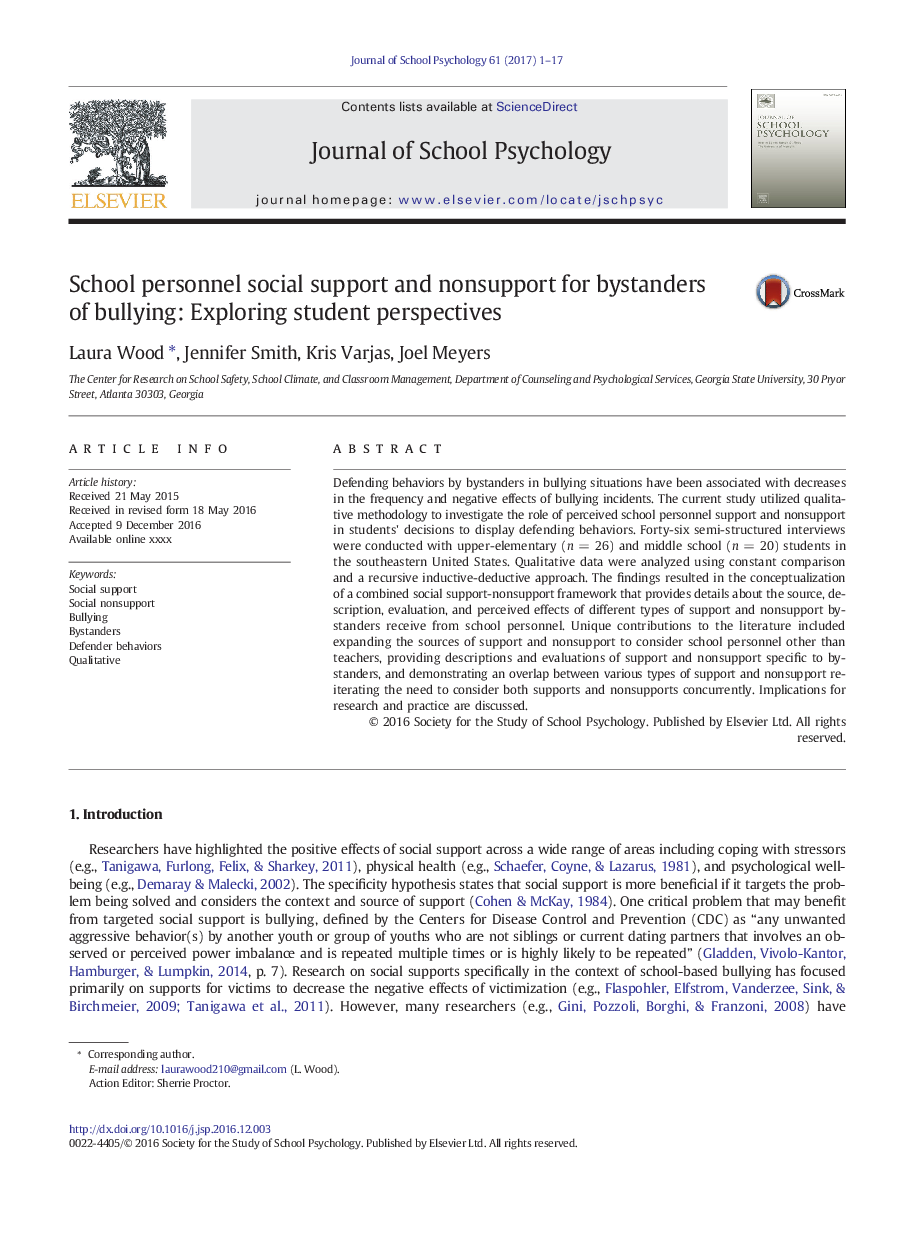ترجمه فارسی عنوان مقاله
پشتیبانی مددکاران مدرسه و عدم حمایت از افراد مبتلا به قلدری: بررسی دیدگاه دانشجویان
عنوان انگلیسی
School personnel social support and nonsupport for bystanders of bullying: Exploring student perspectives
| کد مقاله | سال انتشار | تعداد صفحات مقاله انگلیسی |
|---|---|---|
| 133353 | 2017 | 17 صفحه PDF |
منبع

Publisher : Elsevier - Science Direct (الزویر - ساینس دایرکت)
Journal : Journal of School Psychology, Volume 61, April 2017, Pages 1-17
ترجمه کلمات کلیدی
حمایت اجتماعی، عدم پشتیبانی اجتماعی، قلدری، بیگانه رفتار مدافعان، کیفی
کلمات کلیدی انگلیسی
Social support; Social nonsupport; Bullying; Bystanders; Defender behaviors; Qualitative;

